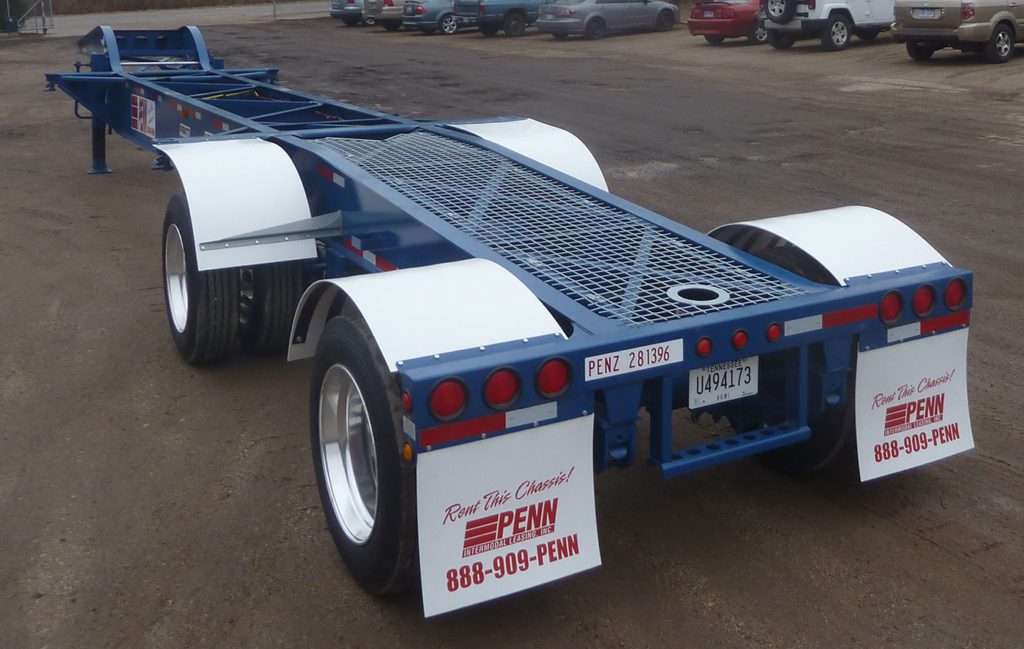
The COVID-19 pandemic resulted in rapid shifts in manufacturing, transportation, and logistics. As the country reopens and we return to more “normal” conditions, let us take a look at what lies ahead.
The Economic Outlook
According to the May NACD Industry Watch economic indicators impacting the liquid bulk transportation industry point to an emerging recovery and forecasters expect these trends to continue into 2022. The NACD metrics included the following:
- The March producer price index value was up 3.74 percent over February.
- The March consumer price index rose by 0.62 percent.
- The March purchasing manager index was up 3.9%.
- The West Texas Intermediate Crude Oil (per barrel) price dropped slightly in April from a $62.33 average in March. However, prices are expected to rise into 2022 as global demand increases following the pandemic recovery, and the Biden administration prioritizes alternative energy sources with lower carbon emissions.
- Natural gas prices are predicted to increase as liquified natural gas (LNG) exports respond to global post-pandemic demand without a corresponding increase in domestic production volumes combined with costly environmental controls.
These metrics are indicative of an increasing demand for products, particularly in sectors such as housing and chemicals. Experts predict the tightening of domestic fuel stores attributable to the environmental policies of the Biden administration. There are also unpredictable factors to consider such as the regional disruptions caused by winter ice storms and the cyber-attack on the Colonial pipeline which resulted in a week-long shutdown. Relations with the Soviet Union and conflict in the Middle East could also impact fuel supplies. When considered together, higher energy prices are forecast, and inflation could exceed 3% for the year in the energy sector.
These Regulatory Priorities of the Biden Administration will Impact Manufacturing, Transportation, and Logistics?
In Biden’s first 100 days as President, he signed an executive order to review risks and vulnerabilities in U.S. supplies of PPE and other critical goods. He has also aggressively promised to reduce Greenhouse Gas Emissions to 50% of 2005 levels by 2030. Transportation is the largest emitter of U.S. greenhouse gasses and climate change is a top priority for this administration. Thus, we are closely watching the progress of the infrastructure plan.
This Biden infrastructure plan includes much-needed funding for the modernization of maritime ports and airports to improve freight transportation efficiency. It also includes large-scale improvements to roads, “economically significant” bridges1, and railways. For roads and highways, the infrastructure proposal proposed allocating $115 billion to modernize 20,000 miles of the roadway while improving air quality and an additional $20 billion to improve road safety.
The new administration upheld Trump-era tariffs and the Department of Commerce (DOC) is moving forward with an antidumping case against China. On March 4th, 2021 the DOC made a preliminary determination “that certain chassis and subassemblies thereof from … China are being, or are likely to be, sold in the United States at less than fair value.”
The U.S. Department of Commerce is considering moving forward with a nearly 40 percent anti-dumping duty on Chinese-made chassis. This duty will go on top of the 25 percent tariffs imposed by the Trump administration. These regulations were implemented to prevent products manufactured overseas from being sold by foreign companies within the U.S. at less than fair market value. They seek to mitigate damages to US companies that resulted from price undercutting and are specifically to bolster the steel industry, U.S. manufacturers, and the U.S. economy.
What Actions do Experts Recommend?
Due to the high demand for products, higher fuel costs, labor and driver shortages, and the expectation of a reduction in imported intermodal equipment and parts from China, manufacturers, distributors, and logistics companies should expect higher prices and longer lead times on orders for new equipment.
Experts recommend the following actions:
- Review transportation and logistics procedures and routes, and consider how shipments of raw materials and final products are moving, what equipment is required, and where delays are occurring. Keep in mind that PPE tends to get priority shipping and demand remains high, so look for alternative solutions when needed.
- Plan: Recently, container shipments are averaging about a month in transit and bulk liquid transport often takes longer. Consider pre-loading of chassis and trailers as well as all other options to improve loading/unloading and driver efficiency. Some suppliers may also benefit from the diversification of shipments along different supply routes to ensure that materials arrive when needed.
- Communicate: Contact distribution, shipping, and logistics partners well in advance of shipping dates. Regular communication will assist in planning for labor, drivers, and transportation equipment to be available when needed. Urgent and last-minute requests will result in higher prices, if equipment is even available.
How We Can Help
The Covid-19 pandemic put a spotlight on traditional supply chains and illuminated areas of opportunity for improvement in the transportation industry. Logistics, manufacturers, distributors, warehousing, and trucking personnel forged ahead to meet these unprecedented obstacles with resilience. As the economic recovery expands, fleet operations managers looking to accommodate growth and expand their fleet turn to Penn Intermodal Leasing for liquid bulk chassis fleet optimization and liquid bulk storage solutions.
For more information contact us here or call us at 888-909-PENN.
Sources
- Ames, Ben. “Transportation Industry Groups Say Priorities in Biden Presidency Should Be Infrastructure, Pandemic.” CSCMPs Supply Chain Quarterly RSS, CSCMP’s Supply Chain Quarterly, 9 Nov. 2020, www.supplychainquarterly.com/articles/4117-transportation-industry-groups-say-priorities-in-biden-presidency-should-be-infrastructure-pandemic.
- Ashe, Ari. “Commerce Department Moves Ahead with Duties on Chinese Chassis.” US Trucking: Commerce Department Moves Ahead with Duties on Chinese Chassis, 17 Mar. 2021, www.joc.com/trucking-logistics/trucking-equipment/commerce-department-moves-ahead-duties-chinese-chassis_20210317.html.
- Ashe, Ari. Outlook 2021: Chassis Providers Eye Equipment Investments, Regulatory Cases, 24 Dec. 2020, www.joc.com/trucking-logistics/trucking-equipment/outlook-2021-chassis-providers-eye-equipment-investments-regulatory-cases_20201224.html.
- 2Leonard, Matt. “Is Lunar New Year the Turning Point for Equipment Shortages?” Supply Chain Dive, 27 Jan. 2021, www.supplychaindive.com/news/ocean-equipment-shortage-chinese-new-year-container-flexport/594040/.
- 1Luhby, Tami, Lobosco, Katie, & Sullivan, Kate. “Here’s What’s in Biden’s Infrastructure Proposal.” CNN, 21 Apr. 2021, https://www.cnn.com/2021/03/31/politics/infrastructure-proposal-biden-explainer/index.html.
- PricewaterhouseCoopers. “What Does Biden’s Executive Order on America’s Supply Chains Mean for Business?” PwC, www.pwc.com/us/en/services/consulting/risk-regulatory/library/biden-executive-order-supply-chain.html.
- Trautman, Susan. “What a Long, Strange Year It’s Been for Importers.” Inside INdiana Business, Dec. 2020, www.insideindianabusiness.com/story/43080646/what-a-long-strange-year-its-been-for-importers.
- U, April. “Proposed Chassis Tariffs Effect on the Chassis Shortage- Penn Lease.” Penn Intermodal Leasing, Inc, Penn Intermodal Leasing, Inc, 27 Aug. 2019
- Wellener, Paul. “2021 Manufacturing Industry Outlook – Industry Today %.” Industry Today, 28 Apr. 2021, industrytoday.com/2021-manufacturing-industry-outlook/.

